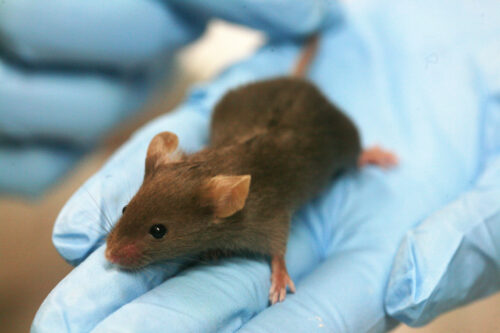Factories use dioxane, a potential carcinogen, to manufacture a variety of industrial compounds. Image courtesy of Flickr.
For decades, a simple organic compound, 1,4-dioxane, has contaminated the household products of many Americans. This chemical, commonly known as dioxane, is used to synthesize and stabilize many industrial compounds. Consequently, it is a known contaminant in many laundry detergents, soaps, and other consumer products. Although exposure to dioxane has been demonstrated to cause cancer in animals, carcinogenic effects in humans have yet to be proven. Due to this knowledge gap, there is no federal standard for levels of dioxane in drinking water or wastewater streams. Further research is needed to support more stringent regulations by the EPA.
Researchers at the Yale School of Medicine hoped to contribute to this question by investigating how dioxane causes cancer in living organisms. The research team, led by Ying Chen and Vasilis Vasiliou, utilized a special type of mouse model to determine the mechanisms by which dioxane could damage cells. The researchers administered high doses of dioxane to two groups of mice: a group of normal mice and a group of mice with a specific genetic modification. This modification removed the gene responsible for the coding of an important liver enzyme that produces a chemical called glutathione.
In a previous study, the researchers found that dioxane damages the liver through oxidative stress, a state in which an imbalance of toxic free radicals causes cellular damage. Glutathione is an antioxidant produced by plants and animals to balance oxidative stress. By removing the gene that produces glutathione in the liver, researchers hoped that the DNA and cellular damage caused by dioxane would be more apparent—and along with it, dioxane’s mechanism of action.
For three months, both groups of mice were exposed to high levels of dioxane, either orally or through drinking water. The researchers used a high concentration of dioxane to more easily pin down the acute effects and potential action mechanisms of dioxane. At the end of the period, the mice were euthanized, with blood and liver samples collected.
Researchers found that dioxane negatively affected many functions of the liver in mice. Additionally, the mice lacking the gene responsible for the enzyme were affected more severely than the normal mice, confirming the research team’s hypothesis. Their results indicate that dioxane alters redox balance, or the balance of toxic free radicals and antioxidants like glutathione.
Although the current study did not pinpoint the exact mechanism for cancers caused by dioxane, the team’s findings reveal that oxidative stress may serve as a candidate mechanism of dioxane liver carcinogenicity. “Redox balance will play a significant role in dioxane metabolism in humans,” said Yewei Wang, a postdoctoral researcher on the team.
The team plans to continue their research. Although pinpointing how dioxane causes cancer will usher in more regulation and consumer protections, there are still many roadblocks in determining the toxicity of dioxane. “Downstream metabolites of dioxane are still unknown,” Wang said. This poses a challenge for researchers looking to investigate the effects of dioxane contamination and toxicity, as the true scope of contamination cannot be determined.
Some states, however, are not waiting for further confirmation of dioxane’s carcinogenicity in humans. Two states, New York and California, have passed legislation setting maximum levels for the contaminant in drinking water and other consumer products like detergents and cosmetics.

The researchers used lab mouse models to investigate dioxane’s potential cancer-causing effects. Image courtesy of Wikimedia Commons.

